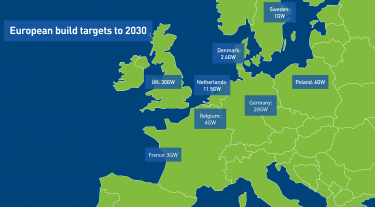The OWA is significantly reducing the cost of offshore wind
The Levelised Cost of Energy (LCOE) for offshore wind has dropped significantly below even the best case industry predictions.
To quantify the impact of the Offshore Wind Accelerator (OWA) we have looked at two theoretical sites typical of the projects currently being planned and built. To each of these, we have applied a range of innovations that the OWA has directly supported that are commercially available now.
Using the OWA developed cost model we quantified in detail the impact of each innovation on the cost of the project.
This was supported by cost data from a range of sources to develop the baseline, and detailed analysis from our innovators, contractors and partners alongside Carbon Trust analysis. Combining the results from these two different scenarios shows an overall impact of a 15 per cent energy cost reduction realised through innovations developed with the support of the OWA.
The OWA has delivered a 15 per cent reduction in the Levelised Cost of Energy
Our analysis shows for a 1GW offshore wind project in the North Sea, OWA-supported innovations provide an overall cost saving of £620 million over the project lifetime. This means that the project will require less subsidy, and consumers and policy makers benefit from cheaper, greener electricity.
£34bn overall savings from OWA
Therefore, the £100 million investment into the OWA to-date will be recouped in the first few years of a single project, resulting in an impressive return on investment for the industry and government funders. This equates to a European-wide cost saving of £34 billion based on European government’s build targets out to 2030.
In 10 years, the Offshore Wind Accelerator has run over 150 projects supporting innovations that have led to both a significant reduction in the cost of energy and risk, whilst making offshore operations safer.



